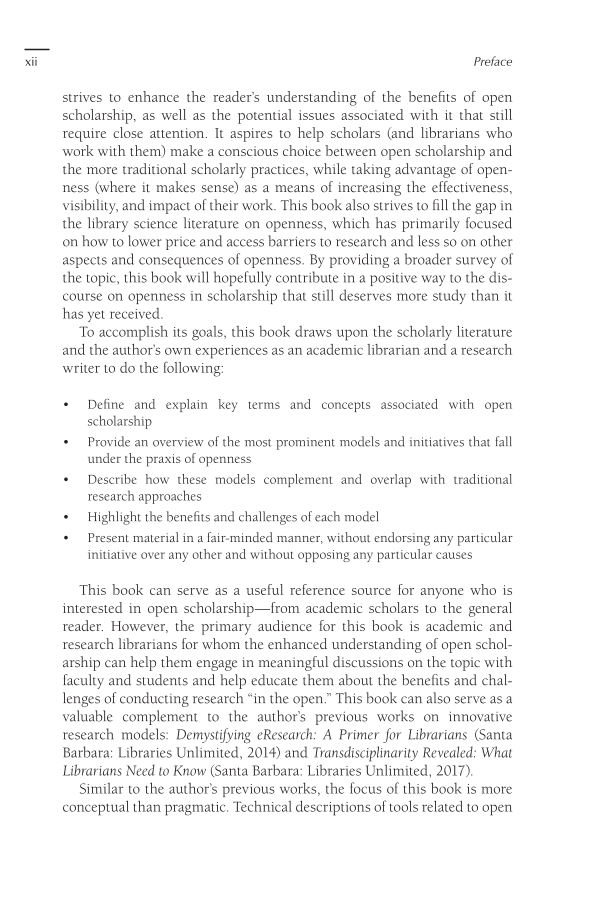xii Preface strives to enhance the reader’s understanding of the benefits of open scholarship, as well as the potential issues associated with it that still require close attention. It aspires to help scholars (and librarians who work with them) make a conscious choice between open scholarship and the more traditional scholarly practices, while taking advantage of open- ness (where it makes sense) as a means of increasing the effectiveness, visibility, and impact of their work. This book also strives to fill the gap in the library science literature on openness, which has primarily focused on how to lower price and access barriers to research and less so on other aspects and consequences of openness. By providing a broader survey of the topic, this book will hopefully contribute in a positive way to the dis- course on openness in scholarship that still deserves more study than it has yet received. To accomplish its goals, this book draws upon the scholarly literature and the author’s own experiences as an academic librarian and a research writer to do the following: • Define and explain key terms and concepts associated with open scholarship • Provide an overview of the most prominent models and initiatives that fall under the praxis of openness • Describe how these models complement and overlap with traditional research approaches • Highlight the benefits and challenges of each model • Present material in a fair-minded manner, without endorsing any particular initiative over any other and without opposing any particular causes This book can serve as a useful reference source for anyone who is interested in open scholarship—from academic scholars to the general reader. However, the primary audience for this book is academic and research librarians for whom the enhanced understanding of open schol- arship can help them engage in meaningful discussions on the topic with faculty and students and help educate them about the benefits and chal- lenges of conducting research “in the open.” This book can also serve as a valuable complement to the author’s previous works on innovative research models: Demystifying eResearch: A Primer for Librarians (Santa Barbara: Libraries Unlimited, 2014) and Transdisciplinarity Revealed: What Librarians Need to Know (Santa Barbara: Libraries Unlimited, 2017). Similar to the author’s previous works, the focus of this book is more conceptual than pragmatic. Technical descriptions of tools related to open
Document Details My Account Print multiple pages
Print
You have printed 0 times in the last 24 hours.
Your print count will reset on at .
You may print 0 more time(s) before then.
You may print a maximum of 0 pages at a time.





























































































































































































































